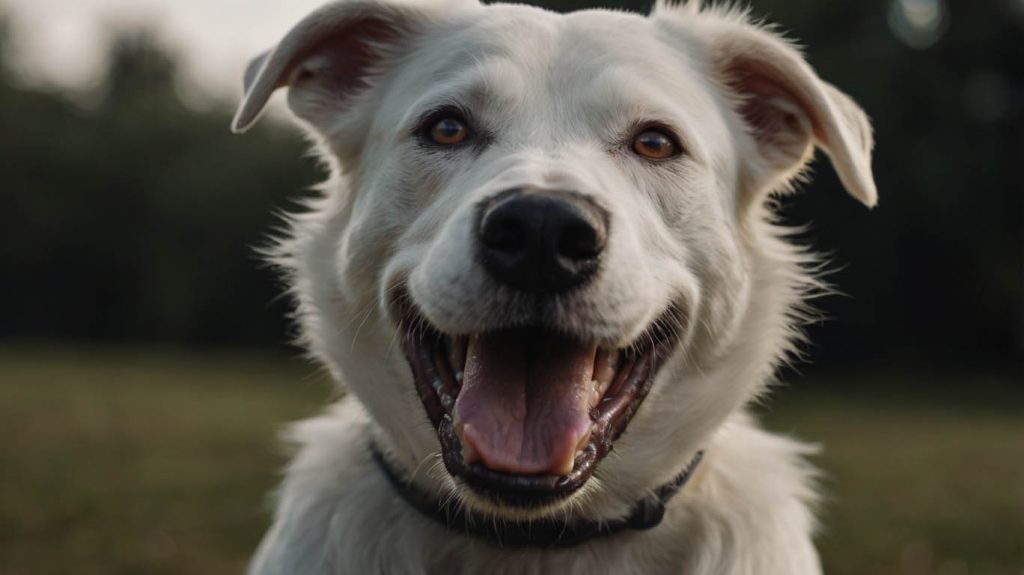Training any dog requires love, patience, and consistency. But learning how to train a deaf dog calls for a special kind of communication — one rooted in trust and visual connection. Deaf dogs may not hear your voice, but they can understand your hands, read your body language, and feel your emotions deeply.
If you’re wondering whether a deaf dog can be trained, the answer is a powerful yes. Deaf dogs can live happy, obedient, and full lives — especially when their humans take the time to understand and speak their language. Let’s walk through the best practices and proven strategies on how to train a deaf dog, using both compassion and science.
Why Learning How to Train a Deaf Dog Matters
The keyword how to train a deaf dog isn’t just a popular search phrase. It’s a topic that transforms lives — both for dogs and the people who love them. Deafness can occur at birth (congenital) or be acquired through illness, old age, or injury. Whatever the reason, training becomes essential not only for obedience but for safety and emotional well-being.
Most importantly, understanding how to train a deaf dog empowers you to raise a confident and connected canine companion.

Understanding Deafness in Dogs
Before you jump into training, it’s important to confirm that your dog is actually deaf. Dogs may ignore commands for many reasons — lack of motivation, distractions, or stubborn behavior.
Here’s how to tell if your dog might be deaf:
- Doesn’t react to loud noises
- Sleeps through doorbells or vacuums
- Gets startled when approached from behind
- Fails to respond to verbal commands
Veterinarians often use the BAER (Brainstem Auditory Evoked Response) test to diagnose deafness definitively.
Building Trust Before Training a Deaf Dog
Trust is the foundation of any strong relationship — and it’s even more vital when learning how to train a deaf dog. Because you can’t rely on your voice, your dog must learn to constantly watch and rely on your signals.
To build trust:
- Approach from the front
- Reward eye contact with treats or affection
- Be consistent in your body language
- Maintain a calm and confident demeanor
Once trust is established, training becomes a joyful and engaging process for both of you.
Essential Visual Cues and Hand Signals for Deaf Dogs
Words don’t work, but your hands do. In how to train a deaf dog, hand signals become your universal language.
Here are a few universally effective hand gestures:
| Command | Hand Signal |
|---|---|
| Sit | Raise palm upward from waist |
| Stay | Open palm held out like a “stop” |
| Come | Sweep both hands toward chest |
| No | Shake index finger left to right |
| Good Boy/Girl | Thumbs up + smile |
You don’t need to use these exact signals. Feel free to invent your own — just ensure you use them consistently across all interactions.
How to Get a Deaf Dog’s Attention Safely
Calling your deaf dog isn’t an option. Instead, you must rely on alternative ways to grab attention without startling them.
Top methods include:
- Flashing a penlight or small flashlight
- Using vibration collars (not shock collars!)
- Stomping lightly on the floor to create vibrations
- Waving your arms or gently tapping nearby surfaces
Each time you use one of these cues, immediately offer a treat or praise to build positive associations.

Positive Reinforcement: The Cornerstone of Deaf Dog Training
Dogs, regardless of hearing ability, respond best to positive reinforcement. This includes rewards such as:
- Tasty treats
- Belly rubs
- Excited facial expressions
- Playtime or favorite toys
Every time your deaf dog follows a command or responds to a cue, reward them right away. Timing is crucial, so keep treats handy.
Creating a Deaf-Friendly Home
When considering how to train a deaf dog, don’t ignore their home environment. Because they can’t hear danger, you need to add visual and tactile cues.
Safety Tips:
- Use baby gates near stairs
- Secure trash cans and sharp objects
- Use door mats or floor textures to indicate room changes
- Label their collar with “I’m Deaf” or use a visual tag
Visual structure helps deaf dogs navigate their world more confidently.
A Story of Hope: Lily’s Transformation
Lily, a young pit bull born deaf, was nearly euthanized before a rescue group stepped in. Her new owner, Samantha, learned how to train a deaf dog through hand signals and patience.
At first, Lily was jumpy and anxious. But with the help of a vibration collar and consistent rewards, she quickly learned to sit, stay, and walk politely on leash. Today, Lily visits schools to teach kids about canine inclusion and compassion.
Samantha says, “Training Lily showed me the power of silent communication. She listens with her eyes — and responds with her heart.”
Socialization Is Still a Must for Deaf Dogs
Just like hearing dogs, deaf dogs need exposure to new people, places, and other animals.
Best practices for socializing deaf dogs:
- Start with quiet environments
- Introduce new stimuli gradually
- Always supervise new dog-dog interactions
- Use a leash and hand signals consistently
With patience, your dog will become comfortable in many settings.
How to Train a Deaf Dog with Technology
Modern training tools make a huge difference:
- Vibration collars: Great for alerting dogs to look at you
- Flashing lights: Use as a recall signal
- Training clickers with visual cues: Pair a flashlight with rewards as a clicker alternative
These tools simplify communication and enhance safety.
Common Challenges and Smart Solutions
What if my deaf dog gets startled easily?
Always approach from the front. Use soft vibrations or gentle tapping to announce yourself.
Can I train my deaf dog off-leash?
Only in enclosed, secure areas. Since they can’t hear danger or your recall, keep them leashed in public.
Do deaf dogs bark more?
Some do, especially if they can’t monitor their own volume. Consistent cues can help reduce unnecessary barking.
Conclusion: Deaf Dogs Hear with Their Heart
You came here to learn how to train a deaf dog, and now you’re equipped with tools, tactics, and inspiration. Deaf dogs aren’t broken. They simply experience the world differently — through sight, smell, and touch instead of sound.
With love, patience, and the right strategy, your deaf dog can thrive beyond your expectations. And you? You’ll gain not just a well-trained companion, but a deeper bond than words could ever express.
FAQs on How to Train a Deaf Dog
Is it harder to train a deaf dog?
Not necessarily — it just requires a different approach focused on visuals and touch.
Are vibration collars safe?
Yes. Vibration collars are humane and useful for attracting your dog’s attention without causing harm.
Can I use sign language?
Yes! Many owners use ASL or custom hand signals.
How do I stop my deaf dog from barking?
Use hand signals to redirect behavior, and avoid leaving them bored or anxious.
Do I need a professional trainer?
Not always. But if you’re struggling, look for a positive reinforcement trainer with deaf dog experience.
Are some breeds more prone to deafness?
Yes — Dalmatians, Boxers, and white-coated breeds have higher instances of congenital deafness.



 How to Train a Deaf Dog: A Step-by-Step Guide
How to Train a Deaf Dog: A Step-by-Step Guide